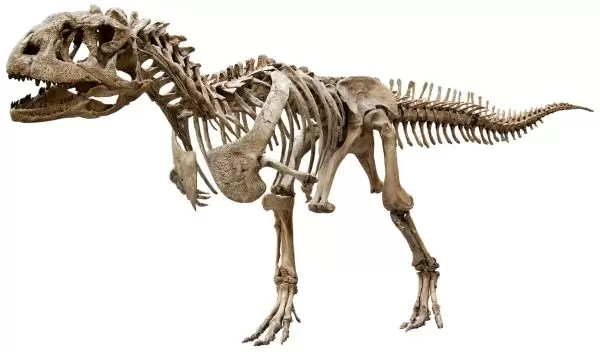
The Bizarre Creatures of Madagascar
Not in my wildest dreams did I anticipate the fossil riches that my research team would discover on our first expedition to the island of Madagascar, off the southeast coast of Africa, back in 1993. And now, 15 years later, we continue to dig up spectacular specimens from the badland hills in the northwestern part of the island that, collectively, reveal a bizarre assemblage of backboned creatures that once lived there.
My original objective was to discover the fossilized remains of mammals that inhabited Madagascar during the Late Cretaceous, at the end of the "Age of Dinosaurs." Today, this huge island is home to some of the most unique mammals on the planet--insectivorous tenrecs, strange carnivores, bizarre rodents and, of course, cute and cuddly lemurs--yet no one had much of a clue back in 1993 how or when these mammals got there, or from where. We wanted to know what animals preceded these unique creatures. Would we be able to find, for instance, ancestral lemurs that were perhaps marooned on the island after it separated from mainland Africa?
Now, 15 years later, the answer is "no." Disappointing? Perhaps ... but not really. Actually, not at all! Why? Because sometimes, even negative evidence can be interesting and the specimens that we did find are, in my opinion, even more intriguing.
We targeted strata that we now know are approximately 65 million years old. We've unearthed exquisitely preserved skulls and skeletons, the most complete being of dinosaurs and crocodiles. They include Majungasaurus, a knobby-headed, 21-foot-long, meat-eating dinosaur; Masiakasaurus, a much smaller, buck-toothed cousin; Rapetosaurus, a lumbering, herbivorous sauropod dinosaur with thick, dinner-plate sized bones in its skin; Simosuchus, a small, pug-nosed crocodile with clove-shaped teeth that probably ate only plants; and Majungasuchus, a much larger crocodile that had a huge, wide mouth like that of a hippopotamus.
By contrast, with one exception (a specimen that is not yet fully studied), all that we found of mammals were fragments of isolated teeth, some the size of a pin-head. Fortunately, their complex anatomy yields a wealth of information.
Two mammal teeth in particular were clearly identifiable as belonging to a strange, extinct group known as gondwanatheres. We named the new gondwanathere Lavanify, which means 'long tooth' in the Malagasy language. Surprisingly, however, the previously known fossil record of gondwanatheres was restricted to Argentina! At about the same time that we discovered these mammals in Madagascar, I became aware that colleagues in India had also discovered gondwanatheres there. And when we analyzed the relationships of our Malagasy mammals, dinosaurs, crocodiles and even frogs--we saw a repeated pattern: the closest relatives were contemporaneous forms in both India and South America. How could this be? How could close relatives of Western Hemisphere animals be found so far to the east, in Madagascar and India?
The answer lies in the realm of plate tectonics. Back in the Cretaceous, these landmasses were physically connected, perhaps through Antarctica; these connections have long since been severed as the various component parts of the southern supercontinent Gondwana fragmented and drifted apart. Interestingly, the geophysicists don't agree on where the connections were and when they were severed; our fossils are providing important, new evidence.
But back to the original quest ... the search for the ancestors of mammals that live on Madagascar today. So far, none of the mammal fossils we have found have any relationship whatsoever to today's lemurs, tenrecs, carnivores and rodents.
What does this mean? The geophysicists tell us that Madagascar became an island, isolated in the Indian Ocean, approximately 85-90 million years ago. If this is true, and the fossils that we find are approximately 65 million years old, it seems the mammalian fauna that existed on Madagascar during the Late Cretaceous ultimately went extinct without issue. The ancestors of the living Malagasy mammals must have arrived on Madagascar after the Cretaceous, and well after it was already an island.
-- David W. Krause, Stony Brook University dkrause@notes.cc.sunysb.edu
This Behind the Scenes article was provided to LiveScience in partnership with the National Science Foundation.


